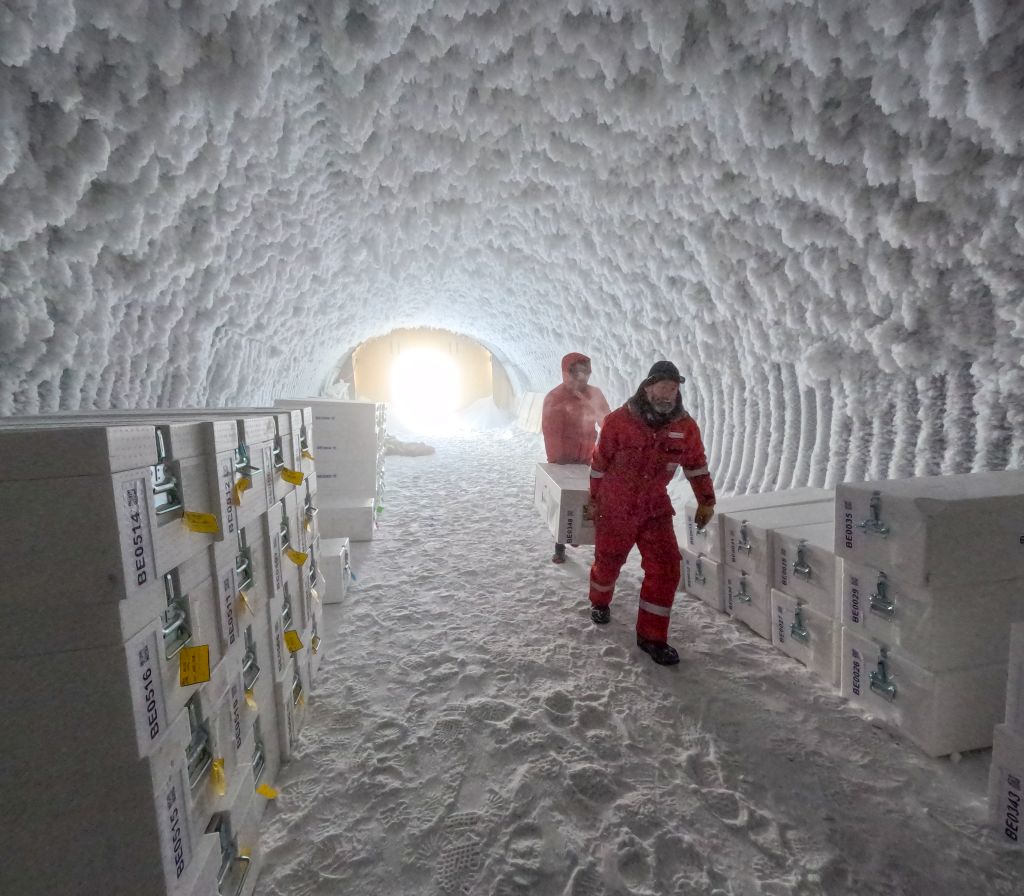ROME (ITALPRESS) – At the Little Dome C remote field in Antarctica, a research team of 12 scientific institutions from 10 European countries has achieved a historic achievement for climate science. The decisive drilling campaign of the European project Beyond EPICA – Oldest Ice has reached a depth of 2,800 meters, where the Antarctic ice sheet meets the rock below. The mined ice preserves an unparalleled archive on Earth’s climate history, providing direct information on atmospheric temperatures and greenhouse gas concentrations over 1.2 million years and probably more. “This is a historic moment for climate and environmental sciences,” comments Carlo Barbante, professor at Cà Foscari University Venice, senior associate at the Institute of Polar Sciences of the National Research Council (CNR-Isp) and coordinator of the Beyond EPICA project. We are talking about the longest continuous record of our past climate obtained through an ice core, and it can reveal the link between carbon cycle and temperature of our planet. A milestone achieved thanks to the extraordinary collaboration of several European research institutes and the dedicated work of female scientists, scientists and logistical field staff over the past decade. “The project benefits from synergy with the EU-funded ITN DEEPICE project, which involved three PhD students during the campaign that began in November 2024 and is still ongoing. “From preliminary analyses conducted at the site, we have strong indications that the first 2.480 meters of ice contain a climate record dating back 1.2 million years, in which information on as much as 13,000 years of climate history is compressed into a single meter of ice,” says Julien Westhoff, scientific field manager and postdoctoral researcher at the University of Copenhagen.The field coordinator, Frank Wilhelms, associate professor at the University of Gòttingen and the Alfred-Wegener-Institut, adds, “Finding the best spot to drill the core took several seasons of work, with the application of advanced radio-echo sounding and glacial flow modeling technologies. It was exceptional to find the record covering the period from 800 thousand to 1.2 million years ago exactly where it was predicted, in the depth range of 2,426 to 2,490 meters, extending our previous record from the EPICA project dating back 20 years. “Beneath the ice that holds the climate record of more than 1.12 million years, the last 210 meters of the ice core consist of very old and highly deformed ice, probably mixed or refrozen, of unknown origin. Advanced analyses could help test previous theories about the behavior of refrozen ice under the Antarctic ice sheet, revealing the history of East Antarctic glaciation, one of the main goals of this project.The European field team accomplished an exceptional feat: more than 200 days of drilling operations and ice core analysis spread over four seasons of work in the hostile environment of the central Antarctic plateau, at an altitude of 3.200 meters above sea level and an average summer temperature of -35°C.The Beyond EPICA project’s ice cores will offer unprecedented information on the Middle-Pleistocene Transition, a period between 900,000 and 1.2 million years ago when glacial cycles slowed from intervals of 41,000 years to 100,000 years. The reasons for this change remain one of the most complex mysteries in climate science, which this project aims to solve. “We are currently in the sixth and penultimate year of European funding. This extraordinary achievement has allowed the project to meet the work plan agreed with the European Commission,” says Chiara Venier, research technologist at CNR-Isp and project manager of Beyond EPICA.”Preliminary isotopic analyses conducted in the field on the Beyond EPICA ice core allowed us to monitor the drilling progress day by day and to synchronize this new and exciting record with the EPICA ice core previously mined at Dome C and with marine sediment records, thus establishing a preliminary time scale,” says Barbara Stenni, full professor at Cà Foscari University Venice.Beyond EPICA – Oldest Ice activities benefit from synergy with research conducted under the National Program of Research in Antarctica (PNRA), funded by the Ministry of University and Research (Mur) and managed by CNR for scientific coordination, ENEA for logistical planning and organization of activities at Antarctic bases, and OGS for technical and scientific management of the icebreaker ship Laura Bassi.”The valuable ice cores extracted during this campaign will be transported to Europe aboard the icebreaker ship Laura Bassi, maintaining the cold chain at -50°C, a significant challenge for the logistics of the project,” says Gianluca Bianchi Fasani, senior researcher at ENEA-UTA and ENEA logistics manager for Beyond EPICA. “To achieve this goal, a strategy was developed that involved the design of specialized cold containers and precise planning of air and naval resources from the National Antarctic Research Program (PNRA). “Once these ice cores arrive in Europe, the project will focus on analyzing the samples to unravel Earth’s climate and atmospheric history over the past 1.5 million years. In the deeper sections of the core, older ice from the pre-Quaternary period may also be present. The dating of the underlying rocks will be undertaken to determine when this region of Antarctica was last ice-free.The Little Dome C field was built and maintained thanks to logistics provided by the French Polar Institute and ENEA, using both their expertise and the various means of transportation available to them. These included aircraft to transport personnel to Mario Zucchelli Station and then to Concordia Station, and ground transportation between Dumont d’Urville and Concordia Stations for heavy loads, as well as the use of the French and Italian ships, L’Astrolabe and Laura Bassi, respectively.
– PNRA IPEV photo -(ITALPRESS).

